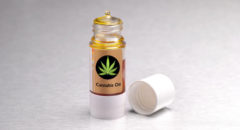
Migraines can be really discomfiting -- that banging ache threatening to pull your head apart. The horror only gets worse when you suffer consistent migraine headaches. What can you do? Can you use Botox for migraines?
The answer is yes. Botox – fully known as OnabotulinumtoxinA – gained approval in 2010 for administration in adults experiencing chronic migraines.
Yes, you read it right. Botox isn’t for just anyone with a headache. The conditions validating botox administration include the patient having an established history of migraine history.
More specifically, the patient must experience at least 15 headache episodes (some of which could be tension-type headaches) within four weeks. Of this minimum fifteen count, eight must be diagnosed migraines.
This means you shouldn’t use Botox for migraines if you experience fourteen or lesser migraines within a month. Also, people experiencing cluster headaches shouldn’t get botox.
I believe by now, you must be curious about how botox works. I am not that ill-mannered to keep you waiting.
READ: Migraines? Get Moving: Exercise Can Help Curb Attacks
How does Botox work for migraine headaches?
Botox is administrable as a migraine therapy because of its neurotransmitter-blocking capacity. Yes, botox acts as roadblocks, obstructing the
transmission of pain signals from the brain.
By impeding these neurochemicals transporting this pain impulse across a synapse to the nerve endings stationed around your neck and head, botox alleviates that pain traditionally associated with migraine.
And yes, there is sufficient scientific documentation to back this capacity. In a study, patients struggling with chronic migraine headaches had botox shots administered on them.
Such therapy resulted in a significant drop in the number of days they suffered chronic headaches in a month.
Another study was equally exciting. 50% of the participants who had double botox shots administered reported a dramatic 50% slash in the number of days they experienced headaches in a month.
Furthermore, by the fifth treatment round, 7 in 10 of the participants were found to have their monthly headache incidence frequency slashed in half.
READ: Can You Eat Your Way to Fewer Migraines?
How is Botox therapy carried out?
When treated by botox, the patient gets Botox injected around his or her neck and head once in three months. This aims at suppressing the migraine. Within the first 14-21 days after the first round, patients can expect the results to start manifesting.
A complete botox therapy could mean a specialized doctor (acquainted with managing migraine with botox – instead of getting your botox shots from cosmeticians) injecting you with up to 40 botox shots.
Typically, the same count of shots is administered on each side of your head. However, in situations where the patient has localized migraine (say in one site), then that pain site could need to be injected more.
The prevalent sites where botox shots are administered include your
neck, temples, forehead, the upper ridge just above your nose, and the back of your head.
So, what sensation can you anticipate after a botox session?
Fundamentally, botox shots don’t hurt. Aside from a slight sting (or, in some cases, a momentary burning feel), these shots are effectively painless.
A Botox session will not exceed fifteen minutes. Depending on the injection site your doctor chooses, he or she could administer more than a shot.
Expectedly, you should be able to proceed with your daily activities with no substantial disruption from the effects of the botox session. But then, there are side effects to take note of.
READ: Migraines: Working With Your Doctor to Find Your Triggers
What side effects can you expect when you use Botox for migraines?
Let us start by saying that incidences of complications arising from botox administration are scarce. The bulk of these isolated incidences saw patients complaining of a stiff sensation at the site where they were injected (commonly neck pain).
Nonetheless, after a botox session, it is not unnatural to feel momentary fatigue in your upper shoulders and neck (typically demonstrated in muscle weakness). In some other instances, you could develop a headache.
These side effects will fade off on their own within days. It is also worth pointing out that the botox toxin may spread beyond the site where you were injected.
While incidences of these are extremely rare, you could consequently experience difficulty swallowing, distortion in vision, muscle weakness, and drooping eyelids.
However, your chances of experiencing these complications are substantially downsized if a medical doctor prescribes botox therapy for you and if trained healthcare professionals perform the shots. Before you embark on botox therapy, spare the effort to use a neurologist with impressive experiencing administering Botox for migraines.








